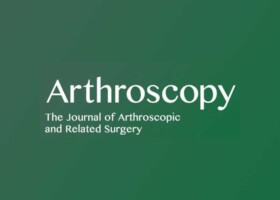
Authors:
Jason M Schon, J Christoph Katthagen, Cameron N Dupre, Justin J Mitchell, Travis Lee Turnbull, Christopher R Adams, Patrick J Denard, Peter J Millett
Abstract:
Purpose:
To investigate glenoid fixation for superior capsule reconstruction (SCR) and evaluate anchor positions, intraosseous trajectories, and proximity to the suprascapular nerve (SSN) and glenoid fossa. The secondary purpose was to provide technical pearls and pitfalls for anchor insertion on the superior glenoid during SCR.
Methods:
Three beath pins were arthroscopically inserted into 12 (n = 12) nonpaired human cadaveric shoulders through Neviaser, anterior, and posterior portals to simulate anchor placement on the superior glenoid during SCR. Computed tomography scans were performed to evaluate anchor positioning and insertion trajectories. Specimens were then dissected to delineate the anatomic relations of the beath pins to the SSN and glenoid fossa.
Results:
The superior glenoid anchor position was a mean 15.0 ± 4.0 mm to the SSN and 6.5 ± 1.7 mm to the glenoid fossa. The posterior glenoid anchor position was a mean 11.8 ± 2.1 mm to the SSN and 2.9 ± 2.9 mm to the glenoid fossa. On average, the superior pin was placed at 12:30 ± 0:30 (left-sided glenoid clock face) and inserted at 19° ± 9° with respect to the sagittal plane of the glenoid, the anterior pin was placed at 11:00 ± 0:30 and inserted 40° ± 17° off the glenoid, and the posterior pin was placed at 3:00 ± 1:00 and inserted at 52° ± 12° off the glenoid.
Conclusions:
The results of the present cadaveric study showed that glenoid fixation was safe with respect to the SSN and delineated technical guidelines and trajectories for inserting 3 anchors into the glenoid.
Clinical relevance:
This study shows that 3 anchors can be inserted into the glenoid without a risk of SSN damage and delineates technical guidelines for anchor insertion.
For the complete study: Quantitative and Computed Tomography Anatomic Analysis of Glenoid Fixation for Superior Capsule Reconstruction: A Cadaveric Study
